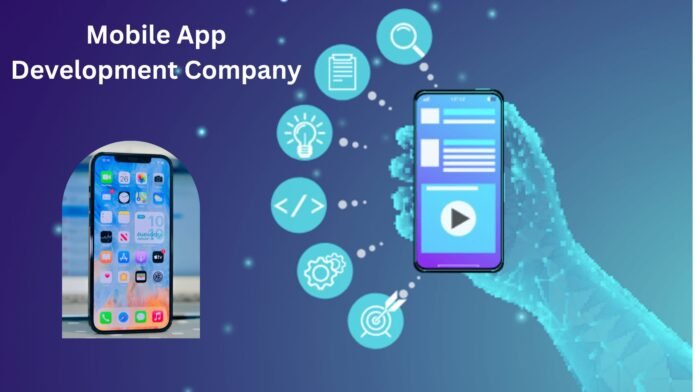Modern cell phones have altered our interactions with the world around us. Millennials would find it very difficult to imagine using their cell phones just for phone calls or text messages. Today’s app shops have spawned an on-demand economy where any good or service a person needs is at their fingertips. There is an app for everything, including ordering meals, doing laundry, hailing a taxi, seeking employment, and doing household duties. Businesses have been pushed to heavily utilize mobile applications as their primary channel of conducting business as a result of the rising smartphone usage throughout the globe. Worldwide online traffic from mobile devices accounted for over 57% of all traffic in 2017. In contrast, it increased to 70% in 2018. By 2025, more than 80% of online traffic will come from mobile devices.
The typical American adult spends 2.2 hours daily on their computer and around 3 hours surfing on their mobile device. Mobile phones are used more often, making them a crucial channel for all businesses, especially in a bustling hub like NYC. As a prominent mobile app development company in NYC, we understand the significance of this trend. In this era of fierce competition, any company worth its salt has to have a mobile app. This article will walk you through creating your mobile app from start to finish if you are a conventional company trying to reach mobile consumers.
1. What is the development process for mobile apps?
The misconception that building software for mobile devices like tablets and smartphones constitutes mobile app development is why individuals fail to create successful mobile apps.
However, writing the code is neither the start nor the conclusion of a successful mobile app development plan. No, it entails rigorous requirements analysis, front-end design, ongoing usability testing, and deployment methods.
2. Producing a scope statement
Our primary responsibility is helping our customers conceive their ideas while working with them at RisingMax. We collaborate with our customers to transform their idea for a mobile app from a simple concept into a finished solution.
We use a scope document to do all of these things. A scope document aids in thoroughly capturing all of your thoughts. A description of the mobile application written in simple terms is included in the scope document. This aids the development team in comprehending your ideas and pursuing them.
Documenting how you believe the app should function for the user and what it should perform is one method of creating your scope document. Imagine yourself in the driver’s seat while you design the app and consider its features.
3. Market and user research
The next stage is determining what issue your mobile application will try to solve. According to statistics, 80% of mobile apps are uninstalled after being used once. This is because there isn’t a user-centred app on the market that meets a particular requirement.
Ensuring your mobile app caters to a particular user’s demands is one way to ensure its success. Users only download applications when they meet a specific requirement. A lack of thorough market research might be disastrous for your app, given the millions of mobile apps being created weekly. Therefore, it is essential to conduct in-depth market research to ensure your application meets a specific need.
Through thorough market research, you may better define your target market population and identify their unique issues, demands, and requirements. Create a customer-centric mobile app by comprehending market dynamics and user needs.
4. Wireframing
We may now start developing Android and iOS mobile applications after collecting app goals, determining the target audience, and defining app features. Defining the app’s features is the first stage.
Listing the various features and their relationships to one another is the first step in determining how the app functions. The process of outlining the user flow of activities and how each action interacts with one another is known as information architecture.
Wireframes are used to create an appropriate information architecture. Making a broad outline of the desired mobile application is known as wireframing. The wireframe is a representation of the suggested mobile application’s skeleton.
A mobile app’s layout, transitions, and interactions are organized into a wireframe according to user criteria. You should primarily utilize visual elements like panels, buttons, text fields, and pop-ups to demonstrate how each capability will be used.
5. Developing a prototype and MVP
The trial version of the suggested mobile app is called a prototype. A prototype is useful for testing the app and determining if the objectives and functions are met. It is incorrect to consider prototypes to be the finished product. Instead, it serves as a sample model to evaluate the efficacy of suggested design solutions for developers, users, and customers.
A prototype or minimum viable product must be created before any mobile application can be considered complete, unlike wireframes, prototypes, and MVPs, which foster discussion and input about the suggested features among designers, users, and clients.
User interactions are accommodated and permitted in a prototype. Consequently, the user may provide immediate feedback to the product creator and tester. Wireframes are useful for helping designers, users, and customers visualize the product, while a prototype provides the appearance and feel, allowing testers to identify any missing features or components.
However, based on our experience, a prototype might sometimes fail because many buyers mistakenly believe it to be a near-final product. Users claim that the UI of the prototype is comparable to that of the final product. Users are more interested in what they see than what they really experience when using the app.
Therefore, rather than evaluating the app’s functionalities, a prototype should mostly be used to demonstrate the app’s overall interface. This is due to the fact that including all functional elements in the prototype requires a lot of time and resources.
In our extensive experience, many mobile app developers make mistakes during the prototype phase. Many developers prioritize creating the ideal user interface at the expense of essential features. They thus create ineffective solutions at the expense of essential features.
Therefore, we advise developers to create a Minimum Viable Product (MVP) instead. An MVP is a product demonstration that contains the features required to enable clients to assess if their needs have been satisfied. After presenting an MVP, feedback is received that aids designers in creating the finished product.
6. Gathering user comments and conducting focus groups
The next stage is to form a focus group with the client and users after generating the prototype and MVP. A focus group aids in gathering user feedback on the prototype that has been produced. The MVP and prototype are available for focus group participants to try out and provide comments on.
A moderator leads the focus group discussions and instructs the participants on utilizing the system. Users must use the system methodically and provide feedback at each stage. The provided input is then combined and added to the finished output. It is essential to choose consumers with various backgrounds to collect thorough data. The moderator should watch how users use certain functions and how long it takes them to complete a job.
7. Advice for developing mobile apps
One of your most important company strategies is to develop a mobile app. Here are some tips to keep in mind to ensure your app succeeds.
Properly conduct market and user research.
You may learn about consumer preferences through market and user research. Building user-centric software that appeals to the user’s interests requires understanding the user’s preferences. Only applications that cater to their demands will draw users’ attention.
Picking the right platforms and features
Finding the ideal platform for your app is the next step after completing user and market research. Choose a platform that fits your individual requirements since various platforms create diverse app aesthetics. You should also decide which features your app will include. Outstanding features improve the UX.
Online usability
Make sure to figure out how your app functions while it is offline. Loading app components that function offline is a frequent tactic. For an app to succeed, this tactic is essential.
A basic app is a must.
Simple mobile applications are very usable. To attract consumers, make sure your app is straightforward, similar to a smartphone.
Keep banners and ads to a minimum.
Ads and banners do help firms make millions of dollars. But first, learn about your intended audience. Most significantly, stay away from overusing banners and advertisements. Users become irritated by frequent interruptions, which might lead them to uninstall an app.
Cellular compatibility
There are two main mobile operating systems: iOS and Android. Make sure your program can function properly across both platforms. Ensure your app also adheres to the correct mobile app development guidelines.
Ensure your app is optimized for the app store.
Effective mobile development helps you retain current customers and attract new ones. However, good features alone won’t lead you to the top of the ladder. To increase app exposure, ensure your app complies with App Store Optimization (ASO) standards.
One app for one purpose
Keep your app from serving several functions. Instead, let your app address a specific issue. Users of mobile applications dislike complexity and being overloaded with information. Using an e-commerce app for medical needs is not recommended.
Select the best developers.
The aforementioned tips are crucial, but the development team will determine if your mobile app succeeds. Make sure the iOS or Android developers you choose are skilled. ‘Jacks of all trades’ developers should be avoided. Make sure you choose subject-matter specialists who can ensure excellence.
8. How do I choose a mobile application development business or agency?
It’s time to choose the best mobile app development partner to turn your killer app concept into a reality after coming up with it. The following factors should be considered while choosing the best mobile app development company in NYC.
Budget
How much is your budget? This is where the app cost calculator comes in. The first thing mobile app development businesses inquire about is your budget. The cost of recruiting knowledgeable developers is real. Be open and transparent with your development team about your first spending plans, and use the app cost calculator to estimate expenses, helping to minimize disagreements. Keep in mind that cheap is costly.
Choose a certain End-To-End Process.
Most reputable mobile app development businesses have a well-defined methodology for designing and creating mobile applications. Our customers can better grasp how we work thanks to this tactic. Additionally, it specifies how we acquire requirements, how we produce final products from prototypes, and how they may connect with us or give us feedback.
Examine the portfolio of the firm.
Every mobile development company has a portfolio of prior projects. In essence, identical projects aren’t necessary, but at the very least, the firm should have a track record of profitable mobile applications. Additionally, the organization should be varied to increase flexibility. Ensure the business has experience working on various projects and isn’t simply a one-trick pony that customizes templates to make fast cash.
Try downloading the app before reading their reviews. Use it so you may at least have first-hand knowledge of their goods.
Recognize the company’s pricing policy.
You must comprehend their fee structure before committing to your development partner. While some mobile development businesses charge hourly, others have set fees. You should inquire more about the number of revisions they give, scope creep, and support and maintenance fees.
Process for obtaining requirements
Companies that create mobile apps for success spend more on research. Recognize the types of data businesses use to compile their UX/UI testing requirements.
Compare various app development companies.
RisingMax Inc., an IT Consulting Company, invites customers to contrast its application development strategy with other service providers. This is due to the fact that, despite our pride in being the greatest in our field, we are not always the best option. Working with clients that have faith in our expertise gives us great pride.





